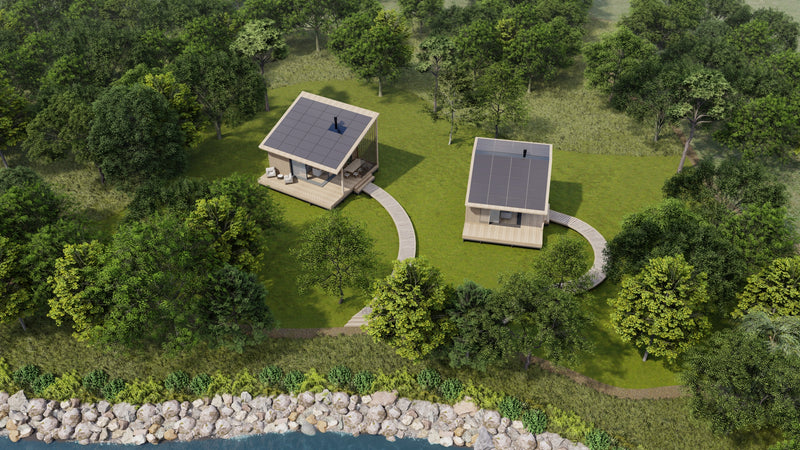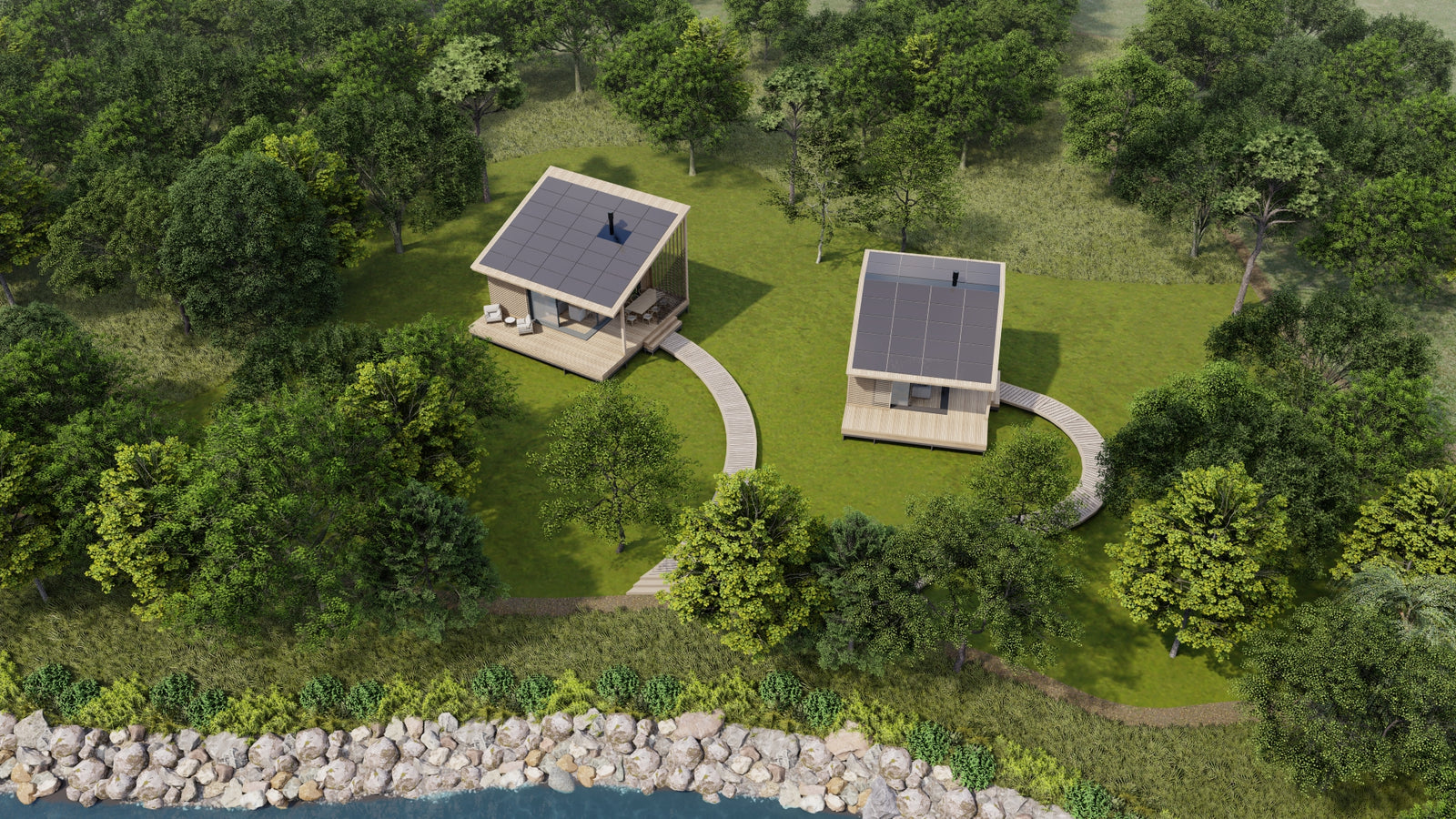net-zero design strategies
Net Zero Energy is defined by the use of energy conservation, energy efficiency, and on-site renewable energy generation to account for 100% of a targeted building's or community's energy usage.
CABN's net-positive energy strategy uses integrated systems for renewable energy with Solar Panels and a leading battery storage system. Net-zero status is achieved by using a combination of renewable power generators and low-energy building techniques, such as Passive Haus building design strategies, CABN's Energy Informed Design (EID), building orientation strategies, efficient heating and cooling systems, high-performance insulation, windows and doors and innovative domestic hot water technology.
Producing CABN buildings with solar panels contributes to the electric grid and reduces the cost of electricity for residents. Today, solar panel technology has become more competitive, boosting from the home systems to the municipal electrical grid, reducing ongoing maintenance and living expenses.








